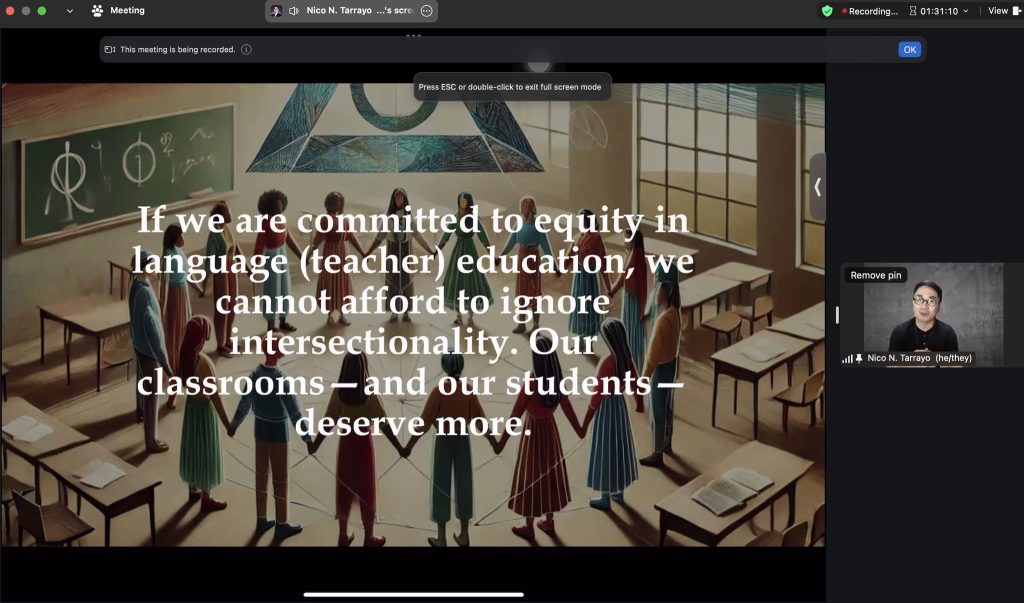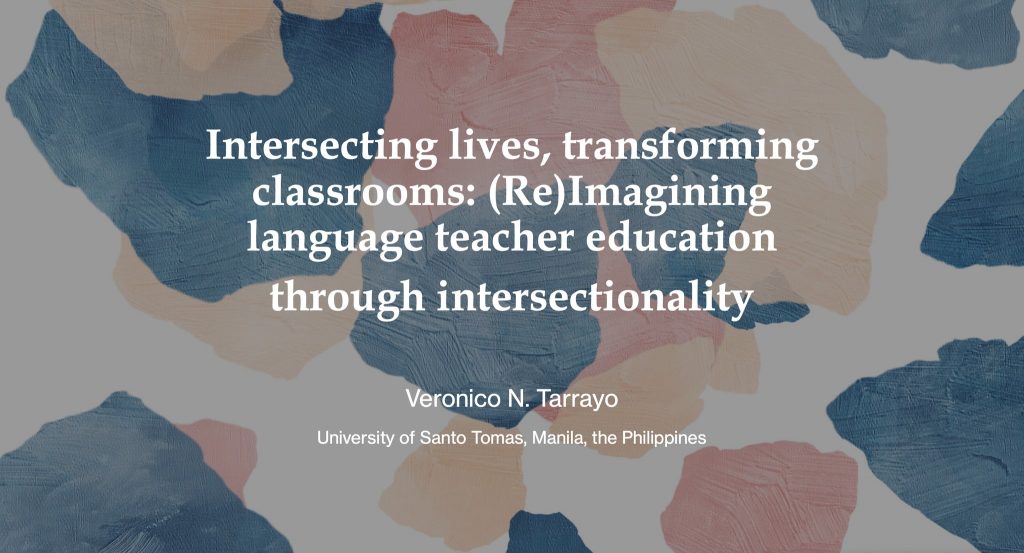In a keynote lecture that challenged the educational status quo, Prof. Veronico N. Tarrayo, Ph.D. of the University of Santo Tomas Faculty of Arts and Letters and the Graduate School called for a radical reimagining of language teacher education (LTE) through the lens of intersectionality during the Second Online “TILTED (Towards Intersectionality in Language Teacher Education)” Conference hosted by the Moray House School of Education and Sport of The University of Edinburgh on March 28, 2025.


His talk titled, “Intersecting lives, transforming classrooms: (Re)imagining language teacher education through intersectionality,” was delivered to a global audience of teacher educators, researchers, and graduate students deeply engaged in equity and inclusion in education. The lecture can be accessed through the TILTED YouTube channel.
The TILTED conference, in its second year, has become a critical platform for educators exploring the overlapping identities that shape both teachers and learners. In his lecture, Prof. Tarrayo underscored a compelling premise: “If we are committed to equity in language (teacher) education, we cannot afford to ignore intersectionality. Our classrooms—and our students—deserve more.”
Drawing from a rigorous systematic literature review, Tarrayo framed intersectionality, first introduced by Kimberlé Crenshaw in 1989, as more than a theoretical concept. Instead, he positioned it as an urgent pedagogical imperative in LTE. According to Tarrayo, the intersection of identities—race, gender, class, sexuality, language, ability—must be understood as fundamentally shaping teachers’ and students’ experiences.
He argued that intersectionality acts as: (1) a tool for critical reflection, enabling educators to confront their own privilege and positionality; (2) a framework for social justice pedagogy, ensuring inclusive, anti-oppressive practices; and (3) a disruptor of hegemonic narratives, especially those upholding native-speakerism and racial hierarchies in LTE.
Through case studies and critical research, Tarrayo spotlighted real classroom struggles—from immigrant mothers of color negotiating linguistic legitimacy (Lee-Johnson, 2023), to queer educators resisting institutional erasure (Riquelme-Sanderson & Longoria, 2023), to teacher candidates in Costa Rica and the U.S. grappling with ‘raciolinguistic’ shame (Vega & Fallas-Escobar, 2024).
While praising the growing international interest in intersectionality, Tarrayo highlighted that most research and policy discourse remain concentrated in the U.S. and parts of Europe. The global South—and its unique sociopolitical realities—continues to be underrepresented.
“Embedding intersectionality into LTE is both necessary and difficult,” he admitted, “but the cost of ignoring it is far greater.”
The talk concluded with concrete strategies for educators and institutions alike: (1) embed intersectionality into teacher education curricula using identity mapping, diverse case studies, and autoethnography; (2) diversify reading lists and teaching materials to include LGBTQIA+, indigenous, and Global South voices; (3) challenge ‘native-speakerist’ and Eurocentric ideologies in assessment and pedagogy; and (4) support marginalized educators through safe spaces and professional development in anti-oppressive pedagogy.
Tarrayo emphasized that intersectionality not only equips educators to teach more justly; it transforms classrooms into spaces of recognition, resistance, and radical care.
As the call for equity in education grows louder, Tarrayo’s keynote delivers a resounding reminder: language teacher education must not only teach what we say—it must reflect who we are.


